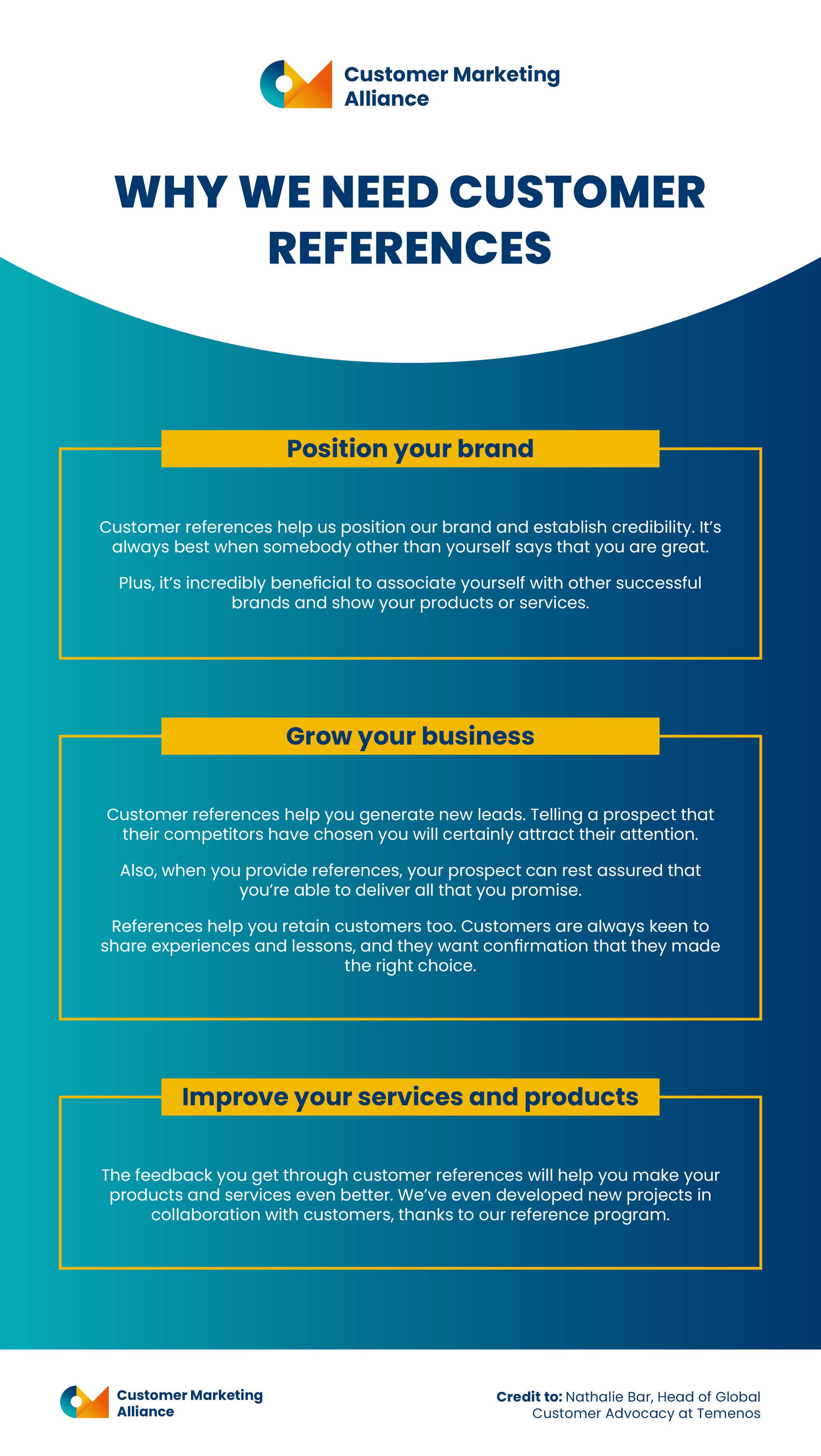
About our speaker:
Nathalie Bar: My name is Nathalie Bar, and I’m the Head of Global Customer Advocacy at Temenos, the world's leading banking software company. We serve over 3000 customers in 150 countries, including 41 of the world’s top 50 banks. 1.2 billion people worldwide rely on Temenos for banking today.
My team and I look after our customer loyalty program, create customer assets, and manage the customer reference program. I’d like to share with you how we built that customer reference program and the benefits it brings to our organization.
Why do we need customer references?
There are three main reasons why we need customer references.
Position your brand
First of all, customer references help us to establish our credibility and position our brand. It's always better when somebody other than yourself says that you are great. Plus, it’s incredibly beneficial to associate your brand with other successful brands and show they trust you and your services or products.
Grow your business
Customer references can help you generate new leads. Telling a prospect that their competitors have chosen you will certainly attract their attention.
They also help with closing deals. When you provide references, your prospect can rest assured that you are able to deliver all that you promise.
Finally, references help you retain customers. Customers are always keen to learn from one another and share experiences and lessons. They also want confirmation that they made the right choice.
Improve your services and products
The feedback that you receive through customer references can help you to make your products and services even better. At Temenos, we’ve even innovated and developed new projects in collaboration with some of our customers, thanks to our reference program.
Who needs customer references?
All kinds of different functions can benefit from customer references. Salespeople will of course need references for RFIs and RFPs. They may also need to find customers who are willing to accept a reference call from a prospect or even host a reference visit in their office.
It’s also important for sales to understand our customers’ stories, challenges, and successes so they can share them with prospects.
Inside sales can also benefit from this program. They’re trying to qualify leads, and dropping names into a conversation or email can be a huge boon. It’s also important for them to be able to articulate to a prospect why they should talk to us and what we have delivered successfully to their peers or competitors.
We can’t forget marketing. We always need references. We need customers that are willing to speak at events and webinars or are happy to be mentioned in a campaign, in a blog, on social media, in white papers, in brochures, and on the website. We’re also always looking for customers to be interviewed by journalists or analysts and participate in case studies.
And finally, senior executives need to be able to show our achievements to investors. How better to do that than with proof from satisfied customers?
How to build a customer reference database
Now that we understand the “why” and the “who,” let’s take a look at the “how.” How do we build a customer reference database? First, let’s define what a customer reference is.
What is a customer reference?
For me, a reference is an account, not an individual, that has agreed to be a reference. At Temenos, we distinguish between public and non-public references. A public reference is a customer who has agreed to have their logo on our website and who is happy for us to mention them publicly in our marketing materials.
Some customers may agree to talk to our prospects in reference calls, but they don't want their logo on our website, generally due to internal policy. These are non-public references.



